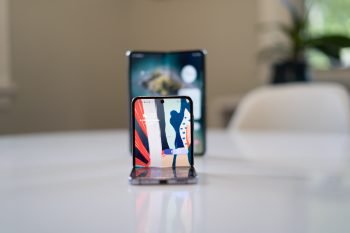
Flip not Fold: large-screen foldables have no future
We have to admit that when the concept of foldable displays first showed up, we were excited, but then when foldable phones were first launched and we saw the price tag, we were disappointed. In fact, it kind of felt like the days of glasses-free 3D phones where it seemed more novel than functional.
We were wrong.
Companies like Samsung have since proven that the foldables form factor is here to stay, at least for the foreseeable future, and their success with their Galaxy Z-series of foldable phones have prompted other companies to follow suit.
Right now there are basically two different styles to choose from. You have the foldables that are phone/tablet hybrids, and then you have those that are flip phones that can turn a regular-sized smartphone into a smaller, more compact version, and we think that is the superior choice that could potentially one day become the new foldables standard, and here’s why.
Pricing, obviously
The most obvious reason why the flip form factor is more appealing and better than the fold form factor is price. It is clear that larger displays cost more money, plus the need to have an external display means more components which equates to additional costs. Add all of this up and you’ve got a smartphone that costs close to the $2,000 mark, which is honestly insane.
Flip phones don’t really have that problem. This is because the foldable display is roughly the size of a regular smartphone display, and the external display isn’t that large either, and this results in a phone that’s around the $1,000 mark. We’re not saying this is cheap, but if you wanted a smartphone with a foldable display, $1,000 is a much easier pill to swallow than $2,000.
We want more compact phones!
The size of our phones these days have gotten a little out of hand. Sure, the larger screens make for better web surfing, video watching, and game playing, but it also makes it hard to use with one hand, especially if you have small hands.
We can appreciate the tablet hybrid design though. Being able to watch videos on a much larger screen is more enjoyable, as well as viewing websites where you can take in more information at a glance. It is also great for productivity and reading ebooks, but when opened up, it’s impossible to use one handed.
You might think that you could always use the external display, but then what would be the point? Plus, the fact that it folds makes the phone considerably thicker than your traditional smartphones could also prove to be inconvenient for some users.
Greater app compatibility
Not all Android apps were created with tablet use in mind. Apps such as Instagram have famously been smartphones-only, which means that using foldable devices could create an issue with an app’s UI and overall experience. At least with the flip form factor, which for the most part maintains a close aspect ratio to your traditional smartphone, this becomes less of an issue.
We suppose you could argue that developers need to do a better job at making sure their apps play nicely with a wider variety of devices, but realistically it might not be feasible because not all developers have the time or resources to main a variety of apps, and some might not choose to do so simply because there isn’t a great enough demand for it.
Conclusion
At the end of the day, people are free to use whichever phones they prefer, but if you’re thinking of getting a foldable phone, then maybe the flip form factor could be a better choice over the fold design. Not only is it cheaper, but it makes for a more compact device and there’s less to worry about when it comes to compatibility with apps.
This isn’t to say that the fold design is doomed, but as Samsung themselves noted in a post back in 2022, it is clear that the flip form factor is the preferred choice where it accounted for 70% of its foldable devices. Samsung did not elaborate on the reasons, but it is obvious that the majority of customers do seem to prefer that form factor over the fold design.